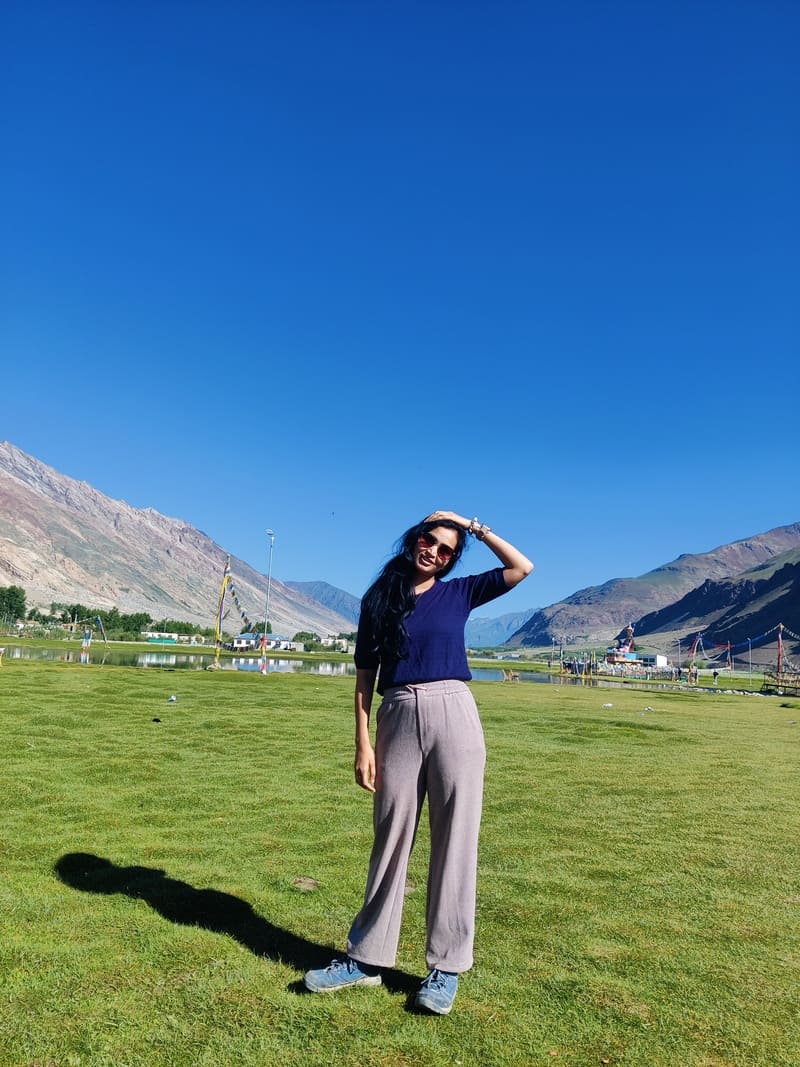Hidden deep in the Himalayas, it’s one of those places that makes you forget time. Towering brown mountains, blue rivers, hanging bridges, and roads where you might not see another soul for hours — that’s Zanskar. It’s wild like Ladakh, calm like Spiti, and yet has a magic that’s all its own. A place where silence speaks louder than words and every turn feels like a new discovery.
This blog is part 2 of our bike ride to Zanskar. You can check part one here: [Zanskar Valley from Manali: A Dream Road Trip].
After an unforgettable night at Gumbok Rangan, we woke up to a golden sunrise. The sky was painted in soft orange hues as the first light hit the mountains. It was chilly, silent, and peaceful — not a single tourist around. Just us, the sound of the wind, and the smell of freshly brewed coffee filling the cold morning air.
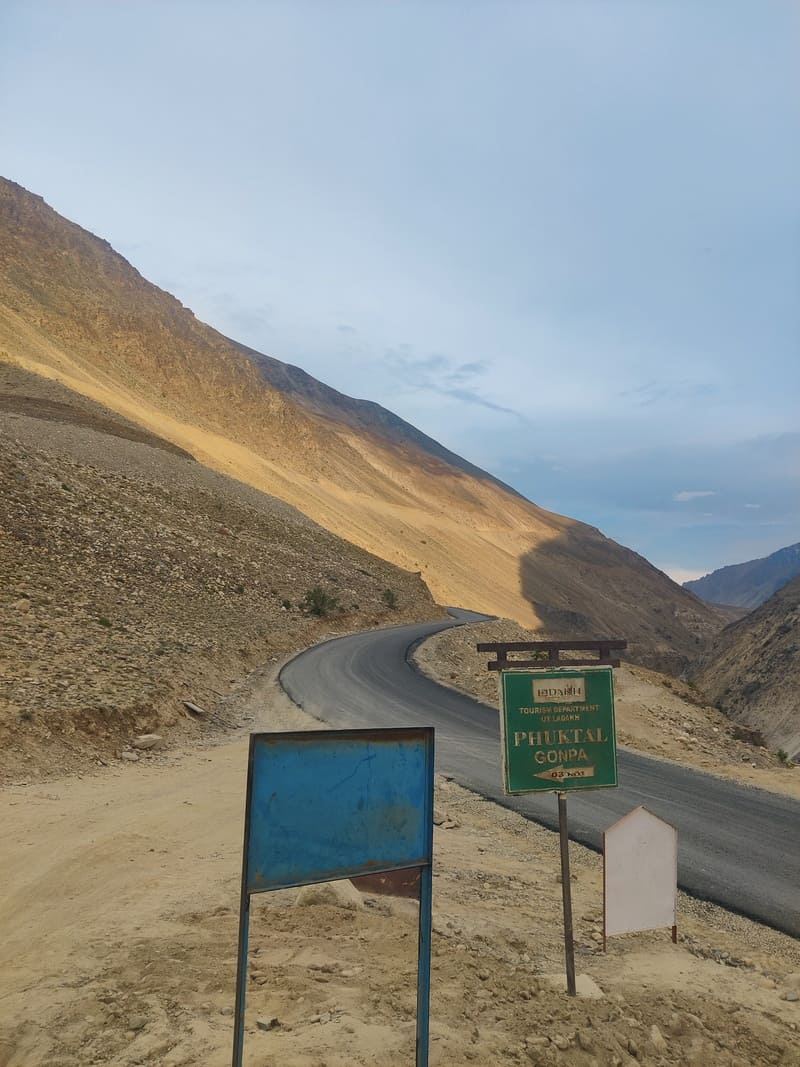
We made coffee on our portable burner, took some water using the solar heater, and got ready for the day. After a quick breakfast at the campsite, it was time to continue our bike ride to Zanskar’s most remote gem — the Phuktal Monastery, one of the most stunning monasteries in the region.
The road from Gonbo to Purne (around 35 km) was a mix of beauty and challenge. Some stretches were smooth and freshly paved — thanks to the hard work of the BRO (Border Roads Organisation) — while others were still under construction. Watching the BRO teams building roads at such high altitudes was truly inspiring. The progress is fast, and it’s clear that this hidden route won’t stay hidden for long.
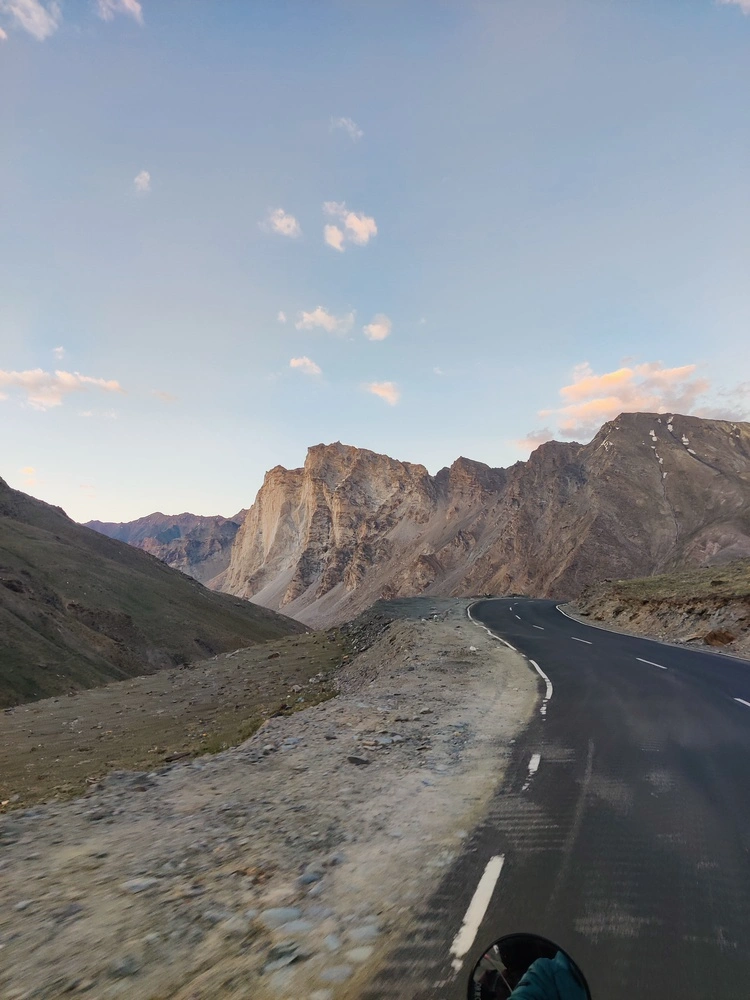
We started riding from Gonbo, and as we moved away from the mountains, we could still see them from a distance. They kept getting smaller as we rode further, until we reached an army check post, where we made an entry in the register with our vehicle details before moving ahead.
For now, though, it still feels wonderfully offbeat. Between Gonbo and Purne, you won’t find a single shop or village — just open valleys, grazing yaks, and the sound of the river running beside you. Purne is the next tiny stop with only one or two options for food and stay, and beyond that, it’s just the road and the wilderness.
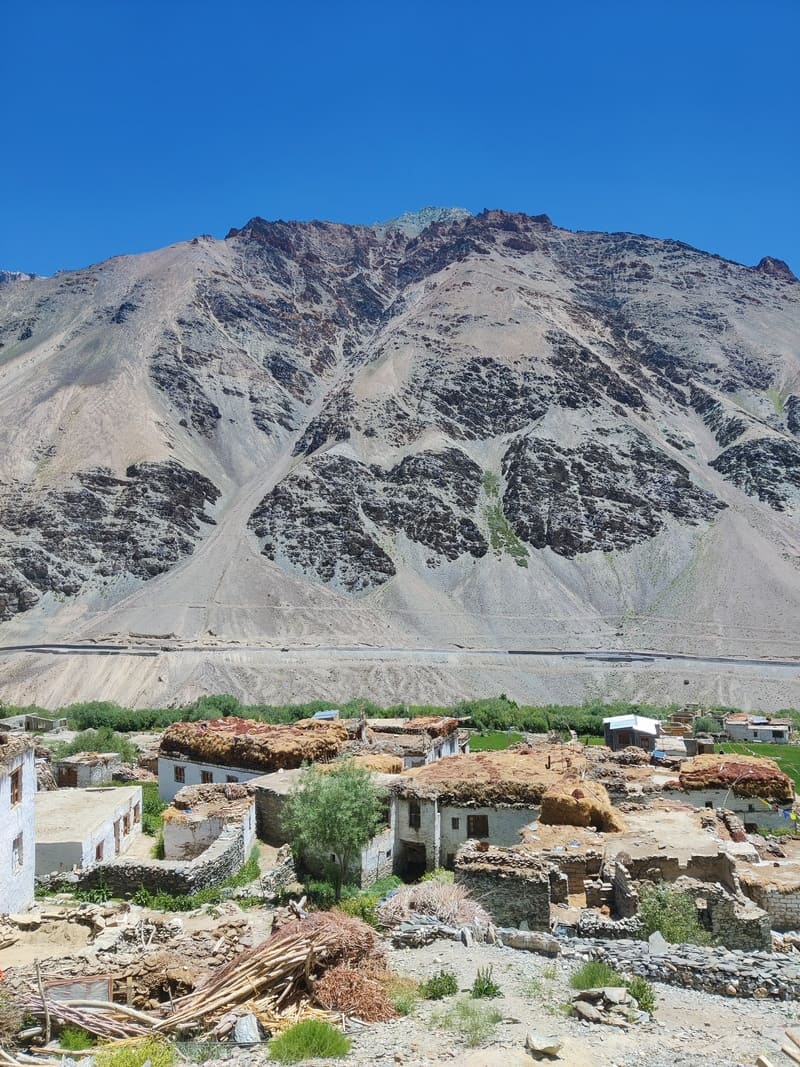
Earlier, the road used to end at Purne, and people had to trek for hours to reach the beautiful Phuktal Monastery — which itself was a true adventure. But things are changing fast. The BRO team is working day and night to open the road further, and because of that, our bike ride to Zanskar became even more thrilling as we rode beyond Purne, through rough terrain and untouched landscapes.
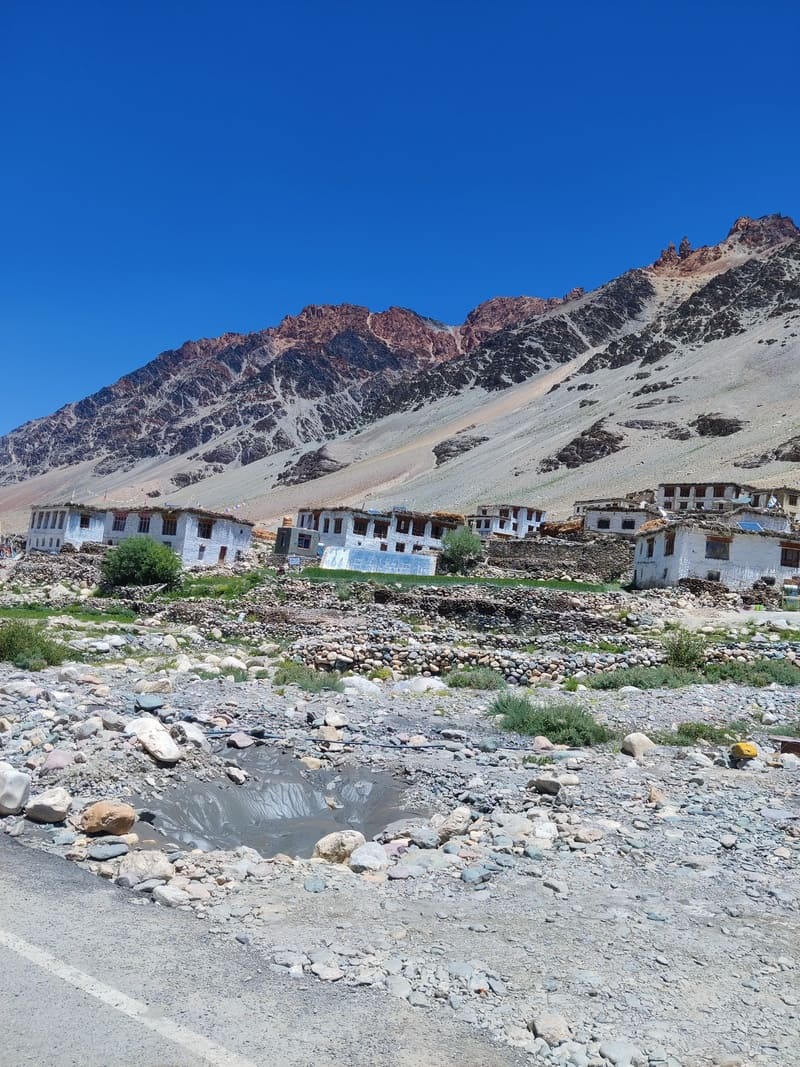
The route was rough but absolutely stunning. Most likely, in a few months, this stretch will turn into a smooth drive — and hopefully, the people living around Phuktal Monastery will get to enjoy the benefits of this new connectivity.
We parked near the river and crossed a wooden bridge, beginning our short hike to the monastery. The trail curved along the cliffside, revealing breathtaking views of the turquoise Tsarap River below. And then, suddenly, there it was — the Phuktal Monastery, clinging to the side of a massive cliff. It looked unreal, like something straight out of a dream.
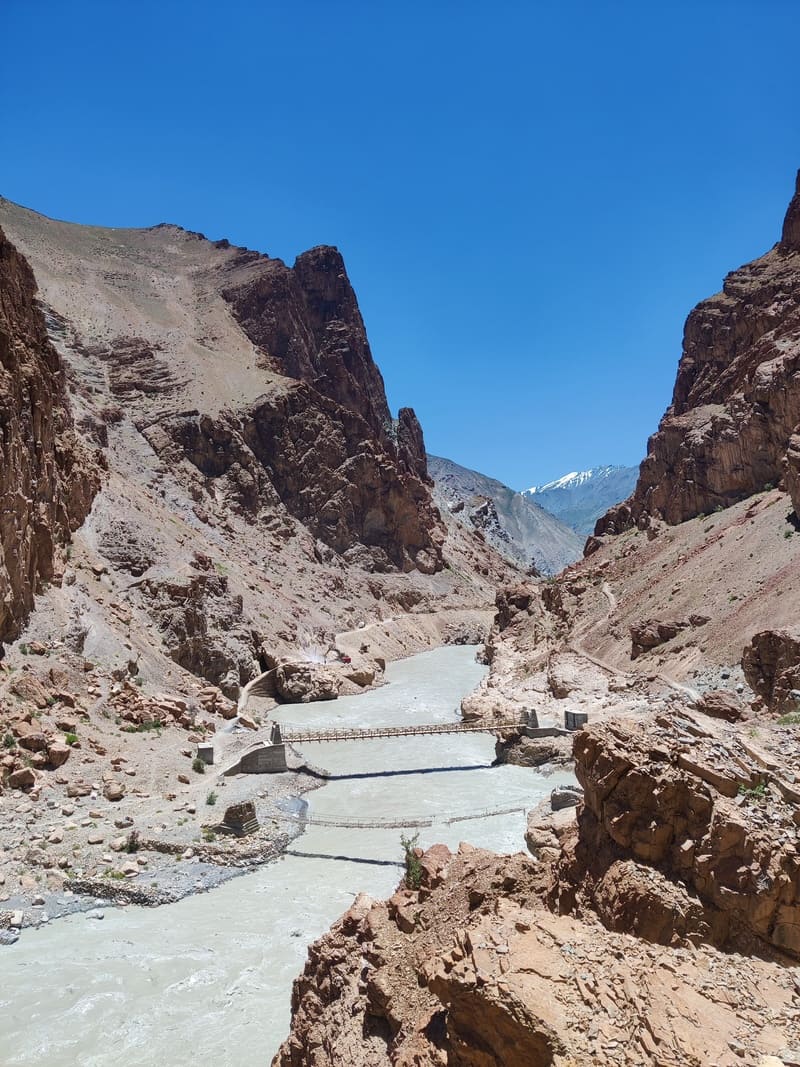
Standing there, I kept wondering — how did anyone even imagine building something like this centuries ago, when there were no roads, no machines, and no help from the outside world? The monastery felt alive with peace, prayers, and stories that time had forgotten. Visiting Phuktal wasn’t just a sightseeing stop; it was an experience that left us speechless.
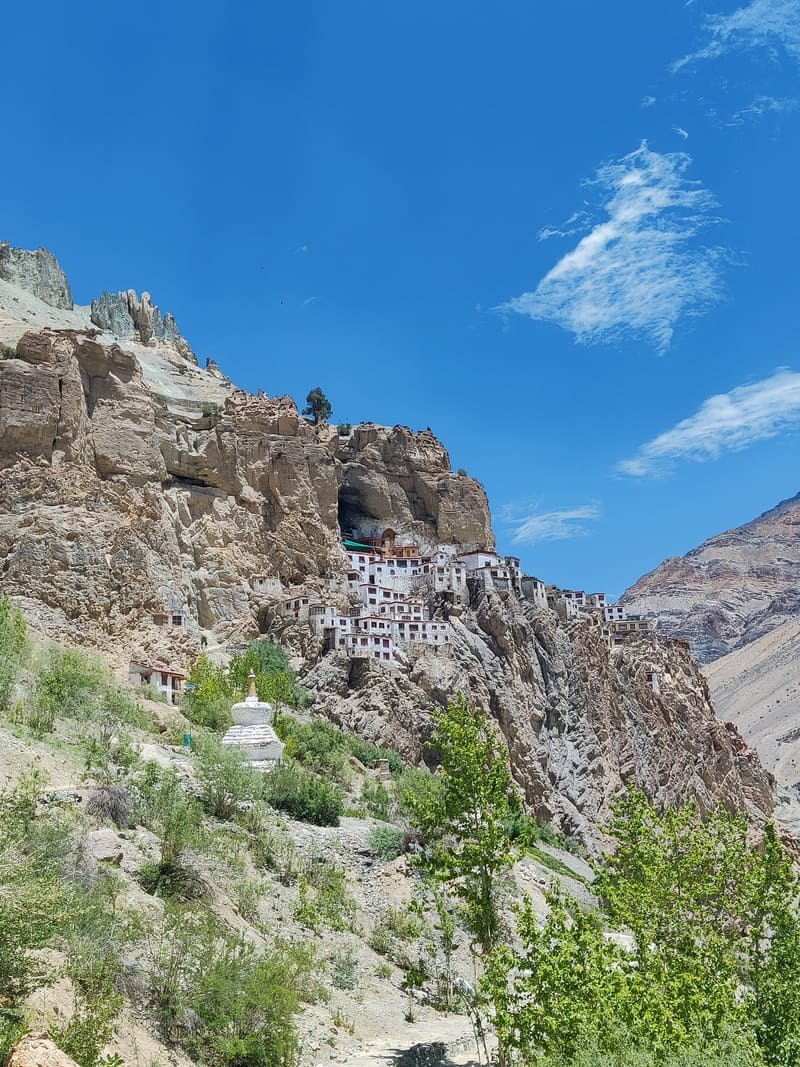
After spending some time soaking in the silence, we decided to ride further toward Padum, the main town of Zanskar. It had been almost two full days without any network, and the thought of getting a signal and a proper meal felt unreal. The road from Purne to Padum is around 45 km, but the terrain is rough — every kilometer demands attention.
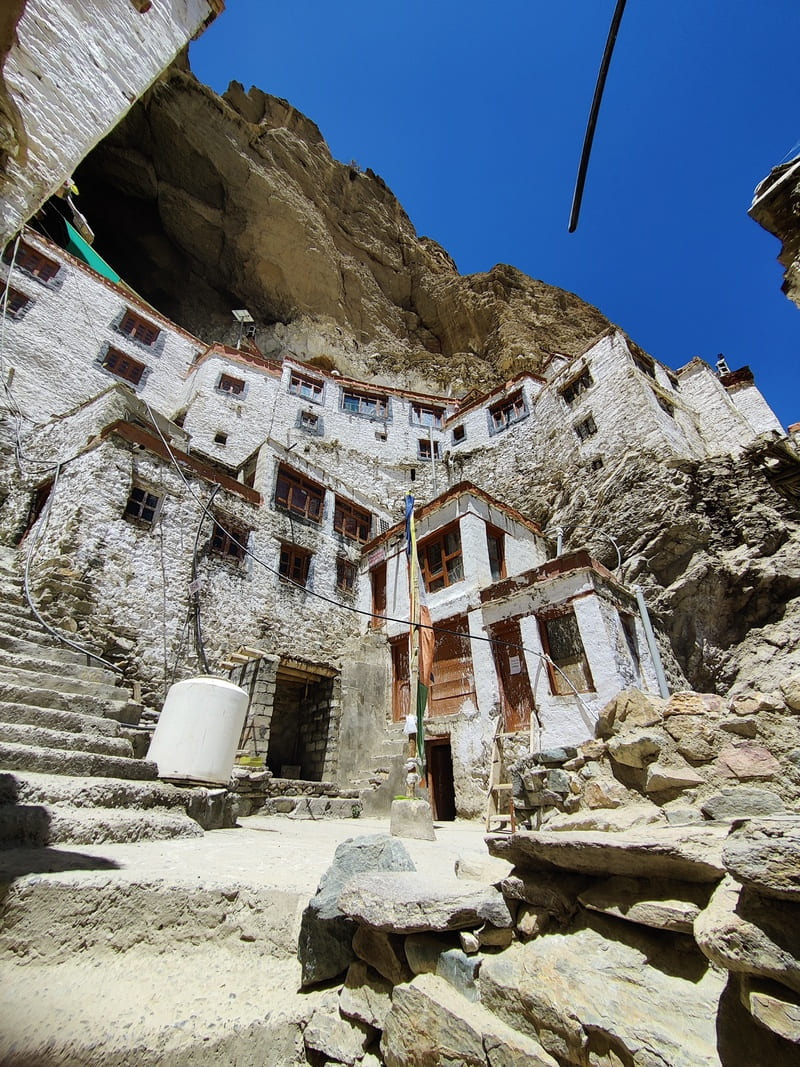
By evening, we finally made it to Padum. Suddenly, there were shops, hotels, and people walking around — a complete contrast to the empty landscapes we had crossed. Padum felt warm and lively. We checked into a small guesthouse, had a hearty meal, and finally relaxed after two intense days of bike ride to Zanskar Valley.
That night, as we sat in Padum, everything from the last two days replayed in our minds — the sunrise at Gumbok Rangan, the rugged roads, the silent cliffs of Phuktal. The journey had been tough, unpredictable, and incredibly beautiful.
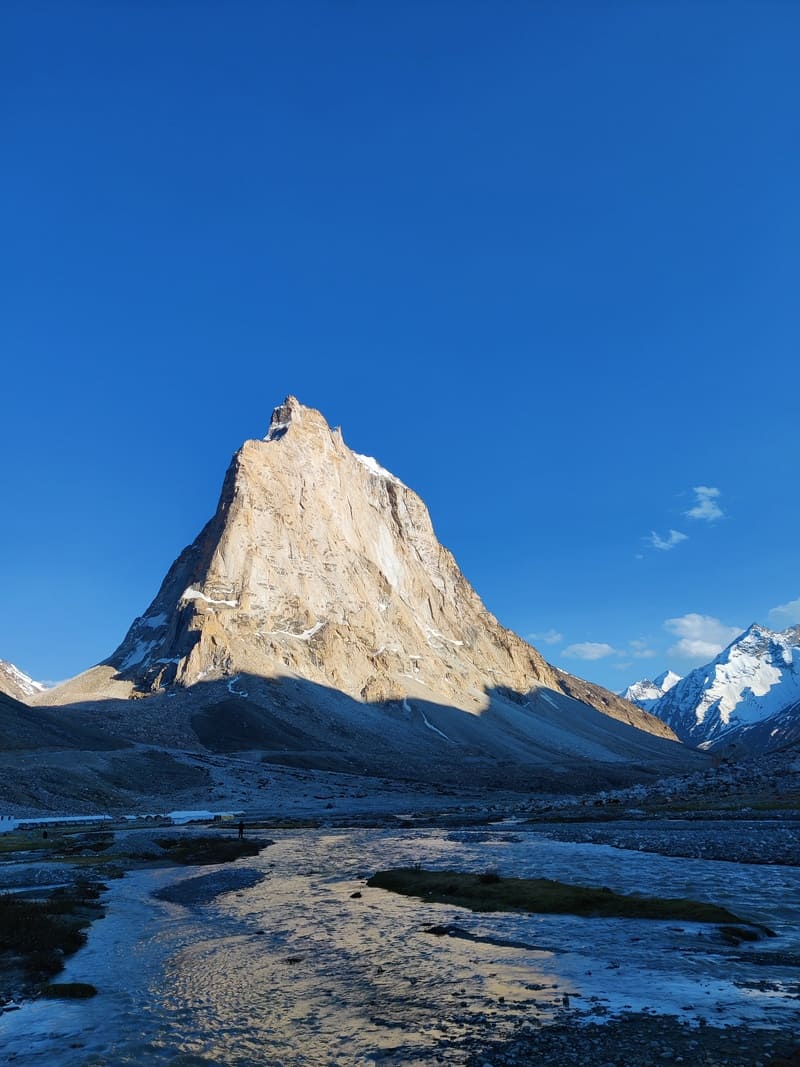
Food, Stay, and Network Options at Padum, Zanskar
After two days without any network, reaching Padum felt like stepping back into civilization. Both Airtel and Jio work here, though the speed can be slow at times. The town has several guesthouses and homestays with basic facilities, some even offering hot water. For food, there are a few cafés and dhabas serving momos, thukpa, and Maggi — simple but satisfying after long days on the road. Padum is also the main hub of Zanskar Valley, making it the perfect place to rest, refuel, and plan the next leg of your bike ride to Zanskar — whether that’s heading back to Manali or exploring deeper into this mystical valley
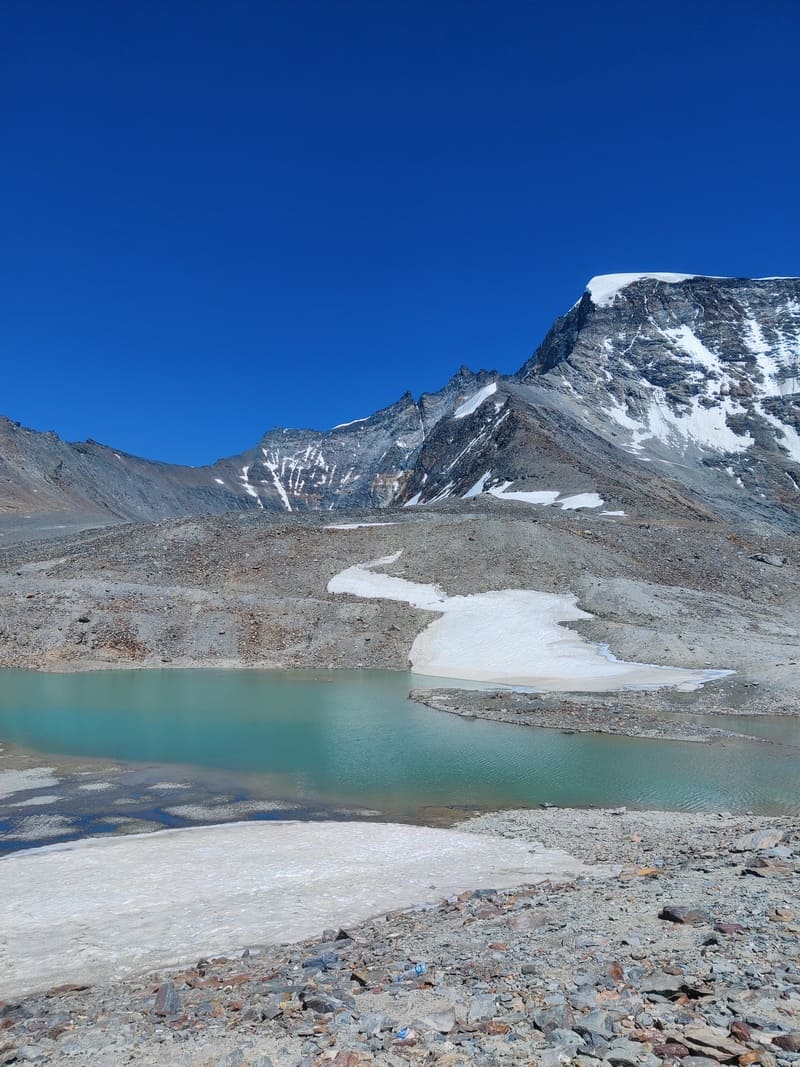
The next morning, we planned to ride back to Manali, but our hearts stayed back in Zanskar. This valley isn’t just another destination — it’s a feeling. The kind that humbles you, slows you down, and makes you fall in love with the road all over again. If you ever dream of adventure, solitude, and raw beauty, a bike ride to Zanskar Valley will give you all that and more.

